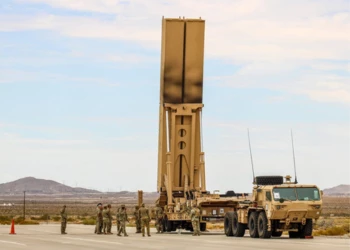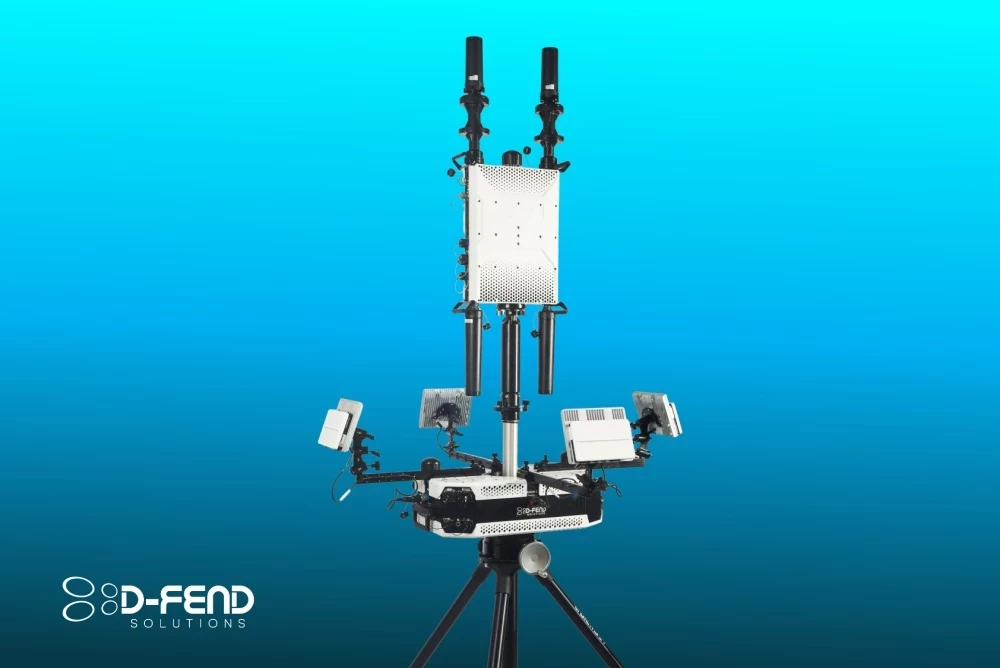Defense News Digest: May 2025
Add bookmark
Welcome to IDGA’s weekly news roundup. For over two decades, IDGA has organized conferences designed to further the national security objectives of the current administration and to facilitate the acquisition priorities of the DoD, DHS, and other federal agencies. Now, through this weekly series, we look to educate the community on the latest research, program updates and news in the defense and government sector.
This month, we will examine five news stories, some of which you might have missed, including President Trump’s Golden Dome initiative, a new AI tool for the Navy, and much more.
Land Forces Tool Up on Pacific Front
As tensions in the Indo-Pacific rise, U.S. land forces—traditionally seen as secondary in a maritime-dominated theater—are undergoing rapid transformation to prepare for potential large-scale conflict, particularly with China. In a recent conference, senior military leaders emphasized the vital role of Army and Marine Corps units in deterrence, integrated missile defense, sustainment, and long-range fires.
The Army’s Transformation in Contact and the Marine Corps’ Force Design 2030 aim to replace outdated systems with advanced technologies like unmanned systems and survivable command posts, drawing lessons from Ukraine. U.S. forces are also increasing their operational tempo through Operation Pathways, conducting over 40 annual exercises with partners such as Australia, the Philippines, and Thailand. These multinational exercises enhance readiness, build interoperability, and send a clear signal to China.
The Army National Guard is also playing a key role through the State Partnership Program, maintaining critical relationships, including in Cambodia, and preparing for possible conflict by integrating Guard units into regional exercises.
DIU Overhauls Blue UAS Program
The Defense Innovation Unit (DIU) is revamping its Blue UAS initiative to accelerate the approval of secure, NDAA-compliant drones for military use. Currently, DIU handles all compliance vetting, but a new approach will enlist 4–6 third-party vendors by late summer to conduct assessments. This aims to streamline a process criticized as slow and labor-intensive.
The Blue UAS list, originally intended as one of several compliance pathways, had effectively become the only one. Under the new plan, drone makers can fund and pursue their own compliance reviews, potentially allowing hundreds of companies to qualify faster.
A new two-tier system will also launch a “Select List” of DoD-sponsored or competition-vetted drones, and a broader “Cleared List” for systems approved by third parties or vetted by AUVSI.
Some army officials have questioned the effectiveness of the current system, citing DIU’s limited staffing and funding as barriers. For example, units seeking replacements for retired Shadow drones have found Blue UAS options too costly and slow to obtain, pushing some to explore alternatives like 3D printing.
House Narrowly Passes Reconciliation Bill Adding $150B in Defense Spending
The House has narrowly passed a sweeping GOP-backed reconciliation bill that includes $150 billion in additional defense spending, advancing President Trump’s military priorities, including the Golden Dome missile defense system. Approved by a 215-214-1 vote, the bill uses the reconciliation process to bypass the Senate filibuster and requires only a simple majority to pass the upper chamber.
Of the $150 billion, $113 billion is set to go into the Pentagon’s FY2026 budget, bringing total defense spending to $1 trillion without increasing the base budget. The remaining funds will be allocated over the course of Trump’s second term. The Golden Dome program alone receives a $24.7 billion downpayment toward its projected $175 billion total cost. Other major allocations include $33.7 billion for shipbuilding, $20.4 billion for munitions production, $12.9 billion for nuclear deterrence, $7.2 billion for air superiority, and $13.5 billion to scale up technology from defense startups and nontraditional companies.
The bill passed after more than 24 hours of heated House debate, during which over 500 amendments were submitted. Defense-related proposals from Democrats, such as limits on the use of a Boeing 747 gifted by Qatar and restrictions tied to Defense Secretary Pete Hegseth, were excluded from floor debate.
Latest on Trump’s Golden Dome
President Donald Trump announced that the Golden Dome missile defense initiative will cost $175 billion and be led by Gen. Michael Guetlein, Vice Chief of Space Operations. Trump said the system will be “fully operational” by the end of his term and capable of intercepting missiles from around the globe and space. He also claimed Canada has expressed interest in joining the project.
Golden Dome, launched via executive order in January, aims to create a multi-layered “system of systems” to defend the U.S. homeland. It will integrate sensors and interceptors from ground to space, including space-based platforms targeting missiles in the boost phase. The initiative draws inspiration from Israel’s Iron Dome.
The project begins with a $25 billion downpayment, but experts predict the final cost could reach into the hundreds of billions—or even trillions—due to its complexity. Technical hurdles include integrating radar and sensor systems and potential spectrum interference. Critics warn it could destabilize nuclear deterrence strategies and cite ethical concerns, especially with private firms like SpaceX potentially leading key components.
Despite the challenges, the project is expected to attract major contractors like Lockheed Martin and Raytheon, as well as startups and tech firms. Lawmakers supporting the plan emphasized the importance of allowing a broad range of companies to compete.
Navy Seeks AI Tools to Enhance Data Processing
As part of its push to modernize operations and improve fleet readiness, the Navy is partnering with the Defense Innovation Unit (DIU) to adopt artificial intelligence and machine learning technologies. The initiative, known as Situational Awareness by Intelligent Learning Systems (SAILS), aims to help Maritime Operations Centers (MOCs) process vast amounts of multi-source data more efficiently.
The Navy is specifically looking for AI tools that can accelerate data analysis, automate workflows, assess platform performance, and offer data-driven resource allocation recommendations. These tools must be user-friendly and modular, ensuring compatibility with a variety of current and future Department of Defense systems.
MOCs, which serve as global logistics and support hubs for maritime assets, face increasing demands as they manage data from space, sea, air, and intelligence sources. The new AI capabilities are expected to enhance decision-making for globally dispersed operations.
The effort aligns with the Navy’s 2023 Navigation Plan, which emphasizes the integration of AI, autonomy, and robotics to counter threats from China and other adversaries. By 2027, the Navy aims to fully incorporate robotic and autonomous systems into routine operations.
Proposals for the SAILS program are due by June 6.
























